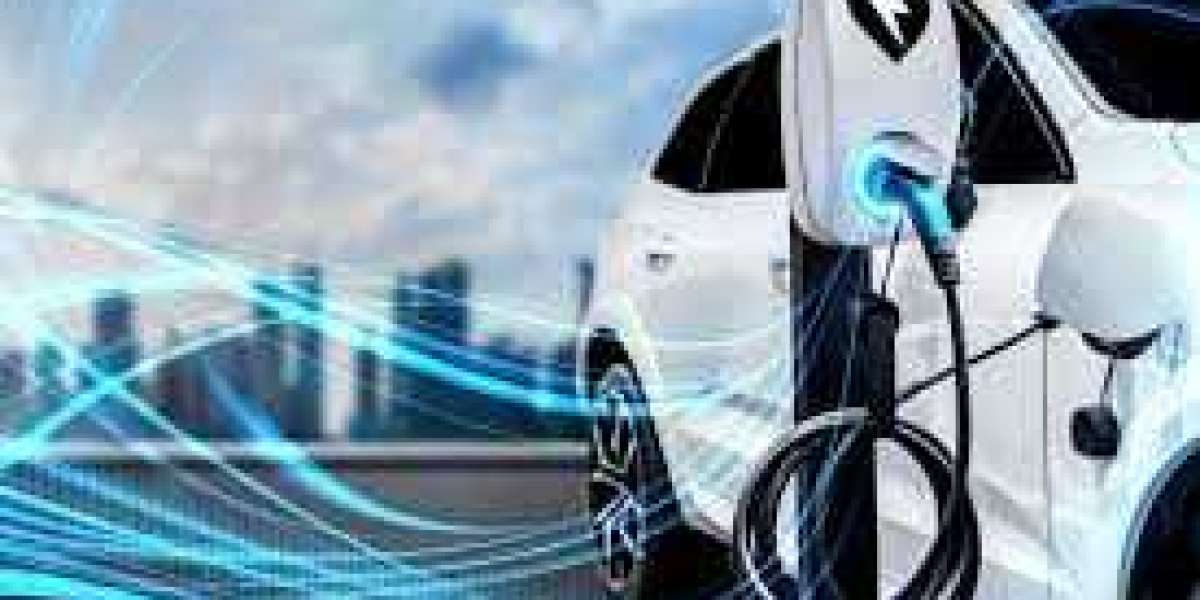In the race to electrify transportation, Tesla has stood head and shoulders above its competition. From sleek car designs to cutting-edge self-driving technology, Tesla has transformed the perception of electric vehicles (EVs) from niche eco-choices into coveted consumer products. However, behind this success lies a lesser-discussed but immensely powerful asset: Tesla’s Supercharger network.
While competitors scramble to catch up in both EV range and production capacity, Tesla’s investment in fast, reliable, and widespread charging infrastructure may be its most strategic move yet. The Supercharger network doesn’t just power vehicles—it powers the entire Tesla ecosystem and plays a pivotal role in accelerating the adoption of electric vehicles globally.
The Problem Tesla Set Out to Solve
One of the most significant psychological and practical barriers to EV adoption has always been “range anxiety”—the fear that an electric vehicle won’t have enough battery charge to reach its destination, especially where charging stations are sparse.
When Tesla first entered the market, public charging infrastructure was virtually non-existent or scattered, slow, and unreliable. Most EV owners relied on home charging, making long-distance travel cumbersome if not impossible. Tesla realized early that merely selling electric vehicles wouldn’t be enough; it needed to create a seamless ownership experience, especially one that removed range anxiety as a concern.
The Birth of the Supercharger Network
In 2012, Tesla unveiled its first Superchargers. These were high-speed charging stations designed exclusively for Tesla vehicles, capable of delivering up to 120 kW of power—enabling drivers to charge their vehicles to 80% in around 30 minutes. Over time, these stations evolved. Today, Tesla's V3 Superchargers offer up to 250 kW, drastically reducing charging times and making electric travel nearly as fast and convenient as stopping at a gas station.
As of early 2025, Tesla has over 50,000 Superchargers across more than 5,000 stations worldwide, with that number expanding rapidly. These Superchargers are strategically located along highways, urban centers, and high-traffic corridors, allowing drivers to take long trips with confidence.
✅ Stat #1: Tesla’s Supercharger network now spans over 50,000 chargers globally as of 2025.
(Source: Tesla's official website)
A Seamless, Proprietary Experience
Tesla’s Supercharger stations are tightly integrated with the Tesla vehicle ecosystem. Drivers don’t have to fumble with credit cards, third-party apps, or access codes. Simply plug in, and the car communicates directly with the charger, billing is automatic, and routing is smart.
Tesla’s onboard navigation system not only directs drivers to the nearest Supercharger but also calculates energy usage, suggests optimal charging stops on long trips, and even adjusts routes in real-time based on charger availability. It’s this user-centric approach that makes the Supercharger network feel like an extension of the vehicle rather than a third-party solution.
A Strategic Moat Around Tesla
Traditional automakers have long approached charging infrastructure as an afterthought—leaving it to third-party networks like Electrify America, ChargePoint, or Ionity. While these networks are growing, they often suffer from fragmented user experiences, compatibility issues, and inconsistent reliability.
Tesla, on the other hand, invested heavily in creating its own closed-loop system. This proprietary network has become a key differentiator. When potential EV buyers compare Tesla to other brands, the ease and reliability of the Supercharger network can be the deciding factor.
✅ Stat #2: According to a 2023 J.D. Power survey, Tesla’s Supercharger network received the highest customer satisfaction rating among all public EV charging networks in the U.S., scoring 739 out of 1,000, compared to the industry average of 558.
(Source: J.D. Power)
Enabling the Road Trip Dream
Historically, EVs were considered urban-only vehicles—practical for short commutes but unsuitable for road trips. Tesla shattered that image by making cross-country EV travel not only possible but enjoyable. The company famously demonstrated a coast-to-coast Supercharger-enabled trip in 2014. Since then, it has continuously expanded the network to cover more remote and rural areas.
Tesla’s goal is to place a Supercharger within easy reach, whether you're driving through the dense streets of Los Angeles or the snowy highways of Scandinavia. This has helped shift consumer perception, making EVs a viable option for all driving needs.
Superchargers as a Business Asset
While Tesla originally provided free Supercharging to early adopters, newer models generally charge a fee per kWh or per minute. Though not a huge revenue generator today, the Supercharger network has strong potential as a monetizable asset.
With millions of Tesla vehicles on the road, Tesla controls a valuable, growing stream of recurring revenue. Moreover, the data collected from each charging session—including location trends, peak usage times, and battery performance—feeds into Tesla’s broader data ecosystem, aiding RD and infrastructure planning.
Opening the Doors to Other EVs
In a move that surprised many, Tesla announced plans to open part of its Supercharger network to non-Tesla EVs. This initiative, already underway in Europe and expanding in North America, has the potential to transform the network into a universal charging standard.
To accommodate non-Tesla EVs, Tesla has developed an adapter known as the Magic Dock, allowing cars with the CCS connector to charge at Supercharger stations. Tesla is also working on enhancing station design to support this dual compatibility without compromising the experience for Tesla owners.
This move has not only earned Tesla government subsidies for infrastructure buildout (such as from the U.S. government’s EV infrastructure bill) but also positions it as the leader in setting industry standards.
The Supercharger Network vs. The Competition
While other charging networks are racing to catch up, none have yet matched Tesla in terms of reliability, scale, and user experience. Issues like broken chargers, slow charging speeds, and poor station maintenance plague many third-party providers.
Tesla’s vertically integrated approach—where hardware, software, and vehicles all come from the same company—gives it an unmatched level of control and consistency. It’s the Apple model applied to mobility.
Additionally, Tesla’s charging stations are often located in convenient, safe locations with amenities, thanks to partnerships with retailers and restaurants. This further enhances the overall experience.
Challenges and Future Outlook
Despite its success, Tesla’s Supercharger network faces several challenges:
- Scalability: As the Tesla fleet grows and non-Tesla vehicles gain access, congestion could become an issue. Tesla is combating this by continuously adding new stations and increasing charging speed.
- Maintenance: A larger network means more resources needed for upkeep. Tesla will need to ensure consistent quality to maintain its lead.
- Competition: Companies like Electrify America, BP Pulse, and Shell Recharge are expanding aggressively. As they improve, the Supercharger network’s exclusivity could diminish.
Yet Tesla remains ahead in vision and execution. Its ongoing investments in battery technology, solar energy, and artificial intelligence suggest that it sees the Supercharger network not just as a charging solution, but as a foundational piece of a larger clean energy ecosystem.
The Hidden Genius: User Retention and Ecosystem Lock-in
Perhaps the most underrated aspect of the Supercharger network is its role in customer retention. For many Tesla owners, the network is the glue that keeps them loyal to the brand. Once accustomed to the convenience and reliability of Supercharging, switching to a different EV brand can feel like a downgrade.
This ecosystem lock-in isn’t dissimilar to the way iPhone users stick with Apple due to iMessage, AirDrop, and the App Store. Tesla, too, has created a tightly integrated experience that’s difficult to replicate.
And with the growing presence of Tesla Energy products—like Powerwall, Solar Roof, and the potential for vehicle-to-grid (V2G) technology—the company is building a holistic energy lifestyle brand. The Supercharger network is the connective tissue that ties mobility to energy, forming a closed loop of generation, storage, and consumption.
Conclusion: The Supercharger Network as Tesla’s True X-Factor
Tesla’s Supercharger network is far more than a convenience; it's a strategic asset that strengthens the brand, simplifies EV ownership, and lowers the barriers to adoption. It solves a problem that every other automaker has left to third parties—and it does so with speed, scale, and user-centric design.
By pioneering the Supercharger network, Tesla didn’t just build chargers; it built trust. It reassured customers that going electric wouldn’t mean compromising on convenience or freedom. That trust is now paying dividends, both in terms of market share and cultural influence.
As more countries set aggressive EV adoption goals and traditional automakers scramble to enter the EV space, the question isn’t whether they can build electric cars—it’s whether they can build the infrastructure to support them. And that’s where Tesla already has a decade-long head start.
The Supercharger network is not just a feature of Tesla vehicles. It is the secret weapon behind their dominance.







